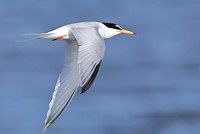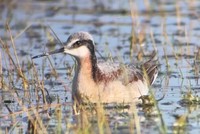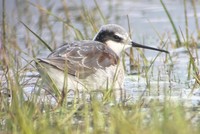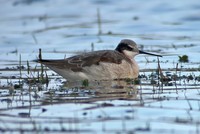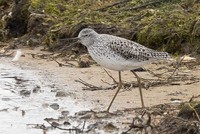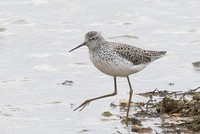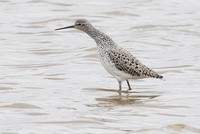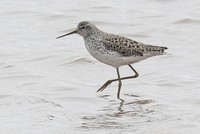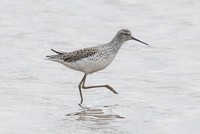New sightings of Beck's Petrels but no tagged birds
An intrepid BirdLife International team are back from their voyage to discover the nesting grounds of Beck's Petrel, a small seabird facing an uncertain future.
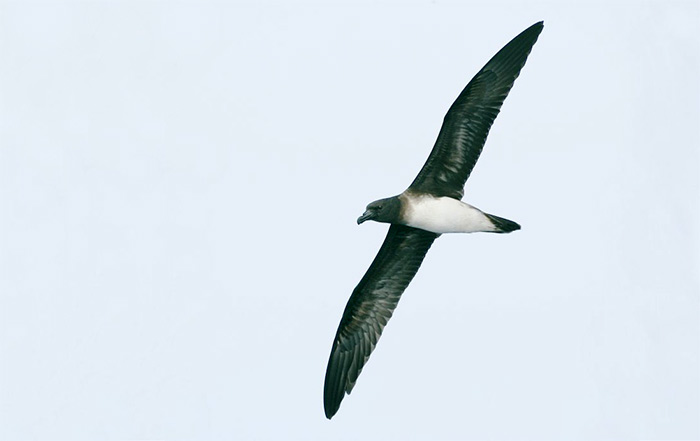
With over 200 kg of chum specially designed to lure the Critically Endangered Beck’s Petrel Pseudobulweria becki, a couple of gas operated net canons for harmless capture and a keen crew of four from BirdLife International and the Wildlife Conservation Society, the PNG Explorer motored out of Kavieng, bound for Cape St George at the southern end of remote New Ireland in Papua New Guinea. Even without “spontaneous chumming” thanks to calm seas, curious Red-footed Boobies Sula sula, Black Noddies Anous minutus and other pantropical seabirds were soon escorting the ship on its 400 km trek south.
The first Beck’s Petrels were soon sighted. Quietly, but with excitement and nervous anticipation, the team set a chum slick, but a few casual swoops and a shake of a tail feather later, the birds’ inspection of this marine buffet was done. Nevertheless, fears that the strong El Niño conditions affecting the Pacific may have caused the petrels to move elsewhere were allayed; and with greater numbers known to be in the vicinity of the Cape, this subdued start was merely a teaser.
Dawn on day two revealed Cape St George, perched on the edge of the 9,000m deep New Britain Trench. With the rich upwellings and currents associated with these marine mountains, it was perhaps no surprise to find seabirds concentrated there. While some, such as Wedge-tailed Shearwaters Ardenna pacifica and Streaked Shearwaters Calonectris leucomelas, were passing through on their annual migrations, noddies, boobies, terns and frigatebirds were frequently seen working the “boil ups”. Scattered among them were a few Beck’s Petrels: hours were spent trying to coax them to the free banquet of chum. Over the next couple of days, all manner of techniques were used in attempting to get them to settle on the surface, but to no avail. Night time chumming and spot-lighting attracted the attention of only several large sharks along with swiftlets which amassed in the ship’s lights “like a snowstorm with dark flakes swirling about” as they hawked on insects.
It soon became clear that catching a single Beck’s Petrel – let alone several – was going to be no easy task. However, the team had one card left to play. Fifty kilometres up the eastern coast, the 2012 BirdLife survey had sighted many Beck’s: Silur Bay now offered the best hope of success. After several hours of searching the 20 km long bay, it was with immense relief that Jez Bird and the team were able to confirm that previous observation. Not only were Beck’s Petrels present in number, but they were bobbing about on the surface! With the tender launched and chum deployed, the hunt was finally on. Yet, despite carefully quiet, slow and stealthy approaches, the birds casually flew off whenever the team got within 100 m. Over the remaining four days this act of cat and mouse played out repeatedly.

Alternative catching strategies evolved, including switching to a kayak that allowed team member Chris Gaskin to get much closer with the net gun. “Sitting in the kayak keeping as low a profile as possible I felt a bit like a polar hunter sneaking up on prey – except the sea temperature, full tropical sun and lurking sharks was a far cry from polar ice flows!” said Chris.
BOOM! Another near miss. While there were few opportunities for deploying the net and even less with a good probability of capture, Chris recalls, “I connected with one as it banked across in front of me, but as the petrel and net dropped to the water it tumbled out and flew away before I could reach it. On another occasion, a bird exhibited its acrobatic prowess, flying through a 50 cm gap beneath the net and sea surface.”
In the end, no capture was made during this expedition, yet a tremendous amount was learned. “Silur Bay has the greatest concentration of Beck’s Petrel we know of and seemingly with some level of consistency”, noted Jez.
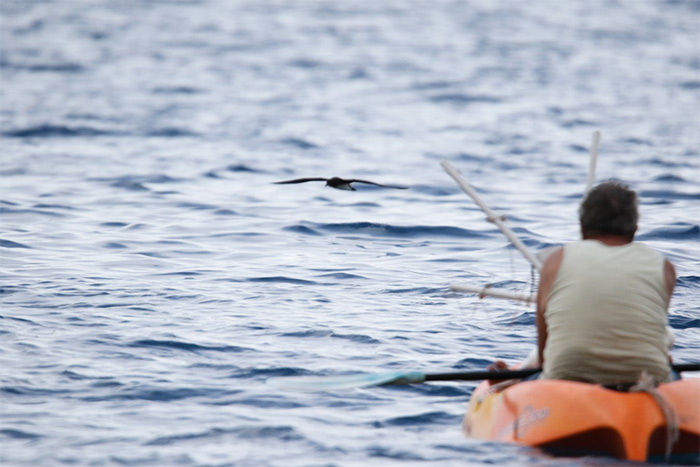
Moreover: “While Beck’s Petrels are extremely wary, the expedition has allowed us to test what we knew about netting seabirds at sea and advance this technique”, said Chris. “The main difference being rather than netting birds on the surface they’re going to have to be caught in the air.”
Toward the end it became apparent that birds would fly low and slowly upwind towards the chum and if we were positioned along this path it would put them within reach of the net. The two almost caught were on this trajectory.
With a few refinements to the project design, including to the catching equipment and support vessels, the team are confident that Beck’s Petrel will be captured during the expedition scheduled for 2017. Then, by attaching satellite transmitters, there will then be a very good chance that we will for the first time discover where this enigmatic petrel breeds.
BirdLife International
9 August 2016



